COLLECTOR’S EDITION
Red Rising is a smart, sharp deck building, hand management board game based on the hit sci-fi book series, Red Rising.
This game is all about combo-tastic moves that will lead you to House supremacy! Red Rising Collector’s Edition is yet another shining example of the attention to detail and superb quality put into Stonemaier Games
Publisher: Stonemaier Games
Designer: Jamey Stegmaier, Alexander Schmidt (II),
Solo Designer: Morten Monrad Pedersen
Artist: Jacqui Davis, Miles Bensky, Justin Wong (Christine Santana – Graphic Design)
Sculptor: Heriberto Valle Martinez
Release date: 2021
1-6 Players
Age: 14+
45 – 60 mins
Favouritefoe score: 9/10
*Deck Building * Hand Management * Drafting * Combo * Asymmetric Powers * Card Drafting * Take That * Sci-fi themed * Solo Mode * Bonus Scoring *
Passion Play!
This is without doubt a passion project. And I am not talking specifically about my review (although every word I write is a direct line from the heart!). This time, I mean specifically the game that is Red Rising.
Jamey Stegmaier aka “Mr. Stonemaier” is a huge fan of the eponymous book series penned by Pierce Brown. After devouring the first fictional instalment in 2014, hastily followed by the second (Golden Son) a year later, Jamey’s dream of creating a game within a fictional dystopian Mars set 700 years into the future was born. And, like a weed, it grew until all the Intellectual Property, financial, and creative planets aligned, making the official Red Rising game a cold, hard, colourful reality.
And, although an avid bookworm, my experience of fantastical literature is embarrassingly limited. As such, my introduction to the world of Red Rising has come directly through the eyes and minds of Jamey and his co-designer, Alexander Schmidt (II).
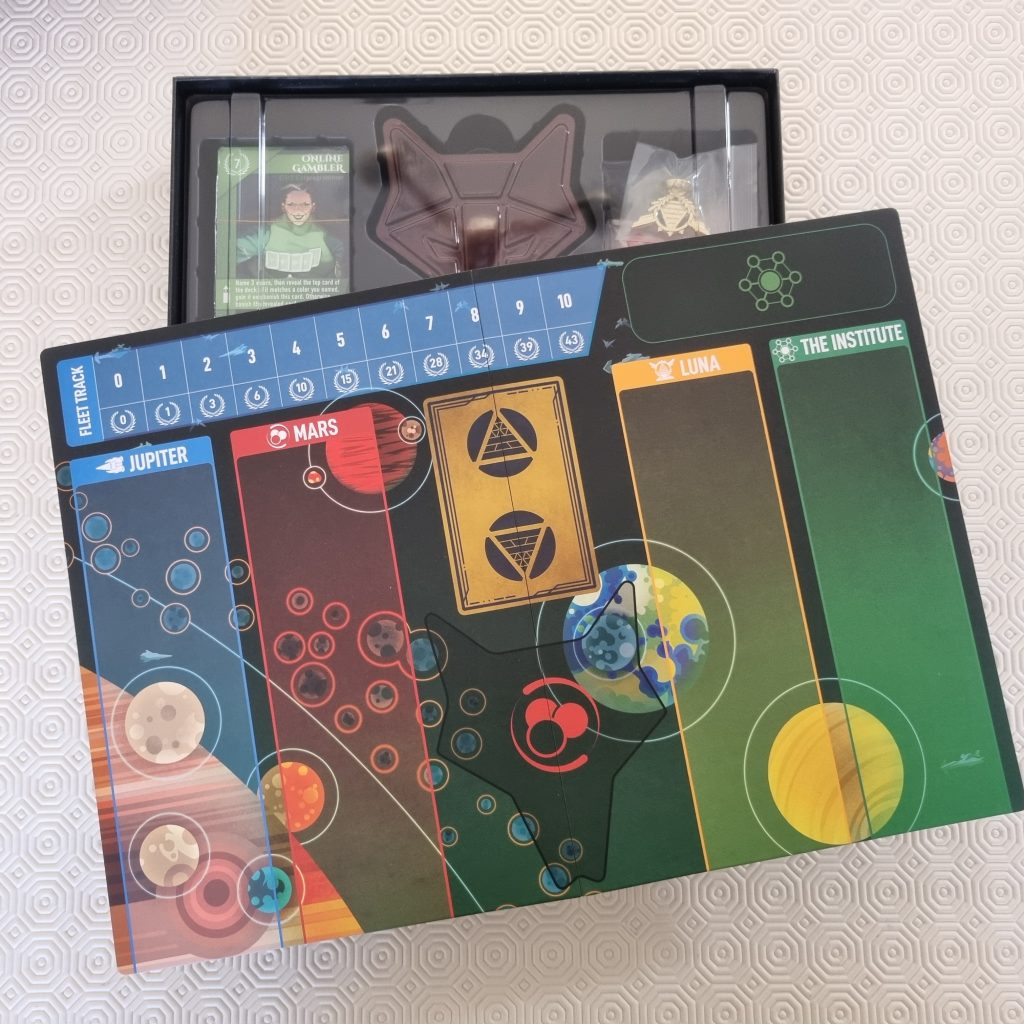
Dystopian Deck Building!
So, have Jamey and Alexander (not to mention their team of talented artists) done the series and their fans proud? Well, based on what I have felt whilst playing Red Rising, I would hasten a strong nod in the affirmative.
Based upon a strict caste system, 6 Houses are clawing, fighting, and thinking their way to supremacy. But for one to rise to power over all others, it must accumulate the most points by amassing the greatest group of followers there ever was.
And what a deck of potential recruits there is! 112 cards, each one representing an individual character capable of unique abilities and points at the end of the game. Plus, with gaming life imitating literary art, these characters are forming their own alliances and enemies, further rewarding and punishing players when the game ends.

Trooping the Colours!
Like all the best games, what you do in Red Rising is very straightforward to understand, and is essentially the same process each turn.
Playing as one of 6 unique Houses, you will have an asymmetric ability at your disposal throughout game. For example, if you are House Jupiter, you’ll be able to skip along the Fleet track an extra space every time you gain the Sovereign Token. And, as you take the Sovereign Token every time you pick a card from the Luna location on your turn, the seminal power of smart decisions and cascading bonus effects in Red Rising should very quickly begin to dawn on you…..
But for now, back to the basic game play.
With a starting hand of 5 randomly drawn character cards, you can “lead” (i.e. activate) one of your cards by “deploying” (i.e. laying) it on one of four locations on the board (Jupiter, Mars, Lunar, or The Institute). If you do this, you then pick up a replacement card from another location, or draw blind from the deck.
Alternatively, you can keep all the cards you have in your hand, draw a random card from the deck (“scout”), and place that card on one of the four locations.
If you deploy a card, you get to carry out the action (“benefit”) described on it. You then also get a location bonus (advancing one place along the fleet track, a helium token, the Sovereign token, or placing a cube on The Institute) when you pick a new card from one of the four locations. If none of the face up characters take your fancy, you can always draw a card from the deck and roll the dice to gain a random bonus.
If you scout instead, then you will get the relevant location bonus, but you can’t activate the benefit on the card. You also won’t get to add a card to your hand.
Play continues in the same vein until the end game scoring conditions are met (i.e. one player has achieved any two of the following: at least 7 helium tokens, 7 on the fleet track, and/or placed 7 cubes on The Institute, or two or more players have together achieved all three). Players then add up their points, and the House with the most is declared the winner. Pick, lay, draw. Keep. Simple.
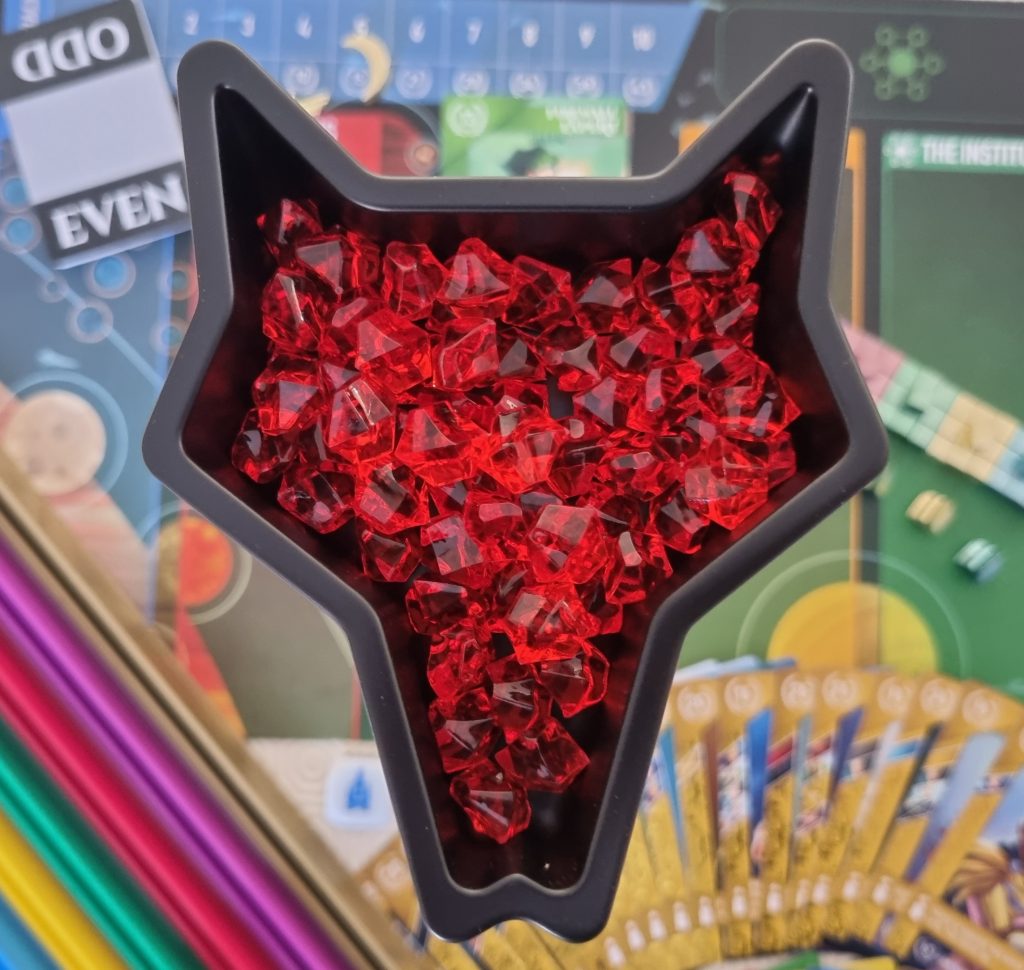
Samey Jamey?
Now, whilst the basic mechanics of each turn in Red Rising are quite repetitive, the effects most certainly are not. And that is because of the uniqueness of the character cards I mentioned earlier.
Usually, as a reviewer, player interaction is a big factor to consider. Can you meddle with your fellow player’s plans? Can you take something from them or change their board? Here, direct interaction comes at you from more than one direction. As well as being able to hate-draft cards to House superiority, interference is happening on a closer, deeper level. Look closely at each of those characters I mentioned, and you will discover that your own cards are conspiring, collaborating, and interacting with each other to boost points and take them away!
And, as hinted at earlier, this the crux and cunning of Red Rising; the skill in combining characters, powers, bonuses, and abilities in order to secure victory over all other Houses.
However, you can’t just focus on the long game. Granted, you may quickly amass cards in your hand that reward juicy end game points, not to mention additional points for holding certain characters, colours, or resources.
But to hold on to them for the whole game will force you to give up a lot of opportunities. You wont be able to trigger immediate actions, take additional cards, manipulate House powers, or grab your choice of location bonuses when leading and deploying.
On this basis, you need to strike a balance. You need to have one beady eye on characters who will give you a points injection when the final round is done, but keep your other eye on what you need to grab this turn or the next.
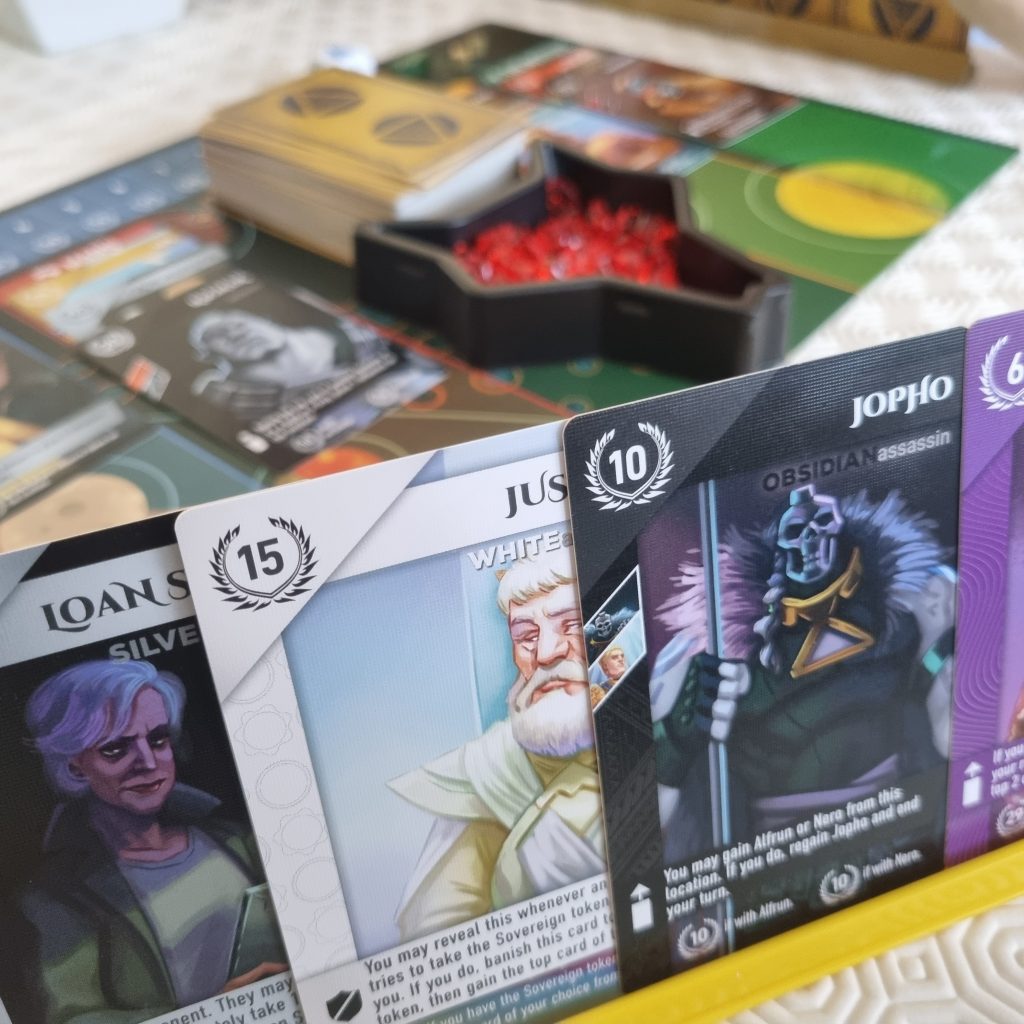
Depth in Dystopia!
And herein lies the unexpected depth in Red Rising. What looks and operates as a simple hand management, deck building game, is actually as rich in strategy and tactics as it is colourful.
You need to actively manage your hand of followers, mitigating the fact that you will need to give up some big hitters in order to (hopefully) reap greater benefits down the line.
Now, initially, I admit this can become overwhelming. With so many different characters each with their own powers, our first half dozen games were very slow. We had no idea what any of the cards could do, or how to optimise combinations of different abilities and bonuses. This led to a lot of reading. Reading cards, re-reading cards, re-re-reading cards, checking House tiles, assessing followers, re-re-re-re-reading cards…… In truth, even with our plays now in double figures, we are still coming across cards with which we aren’t overly familiar, and this can cause play to momentarily slow down.
But, this almost endless variety is a double edged sword. Whilst nobody likes a lot of down time, nor to be paralysed by choice, it does mean that no two games (and therefore no two strategies) have been the same. And replayability is something I always look for in a game.
Plus, having played Red Rising multiple times now, we are becoming a lot more familiar with the characteristics of the various colours and individuals; pinks generally moving other cards around, reds often gaining something (which makes sense as they are the labourers), golds treating everyone and everything like cargo etc.
Knowledge is Power!
Not only that, developing an insight into which characters work best with others is coming along. The cards themselves help with this (by showing relevant colour banners as well as written descriptions of ideal hand-buddies), but it really comes to the fore when you automatically “know” them. When you pick cards knowing that they are going to work together and come through for you later in the game.
I am actually getting better at amassing cards and giving myself choice. During my first few games, I struggled to get and keep enough cards to make any effective combination. Knowing that specific characters give the ability to draw more cards when deployed, however, has definitely improved my gameplay overall.
And it has led to me being braver about developing my hand of followers over the course of a game.
Leading will always change what is in my hand, but early in the game this results in more immediately valuable reward than risk. As the game goes on, banking cards and moving to a scouting heavy position is sensible, but that is not without its own useful payday. The resulting location bonuses will trigger the end of the game ensuring I have enough when the whistle blows is a no-brainer.
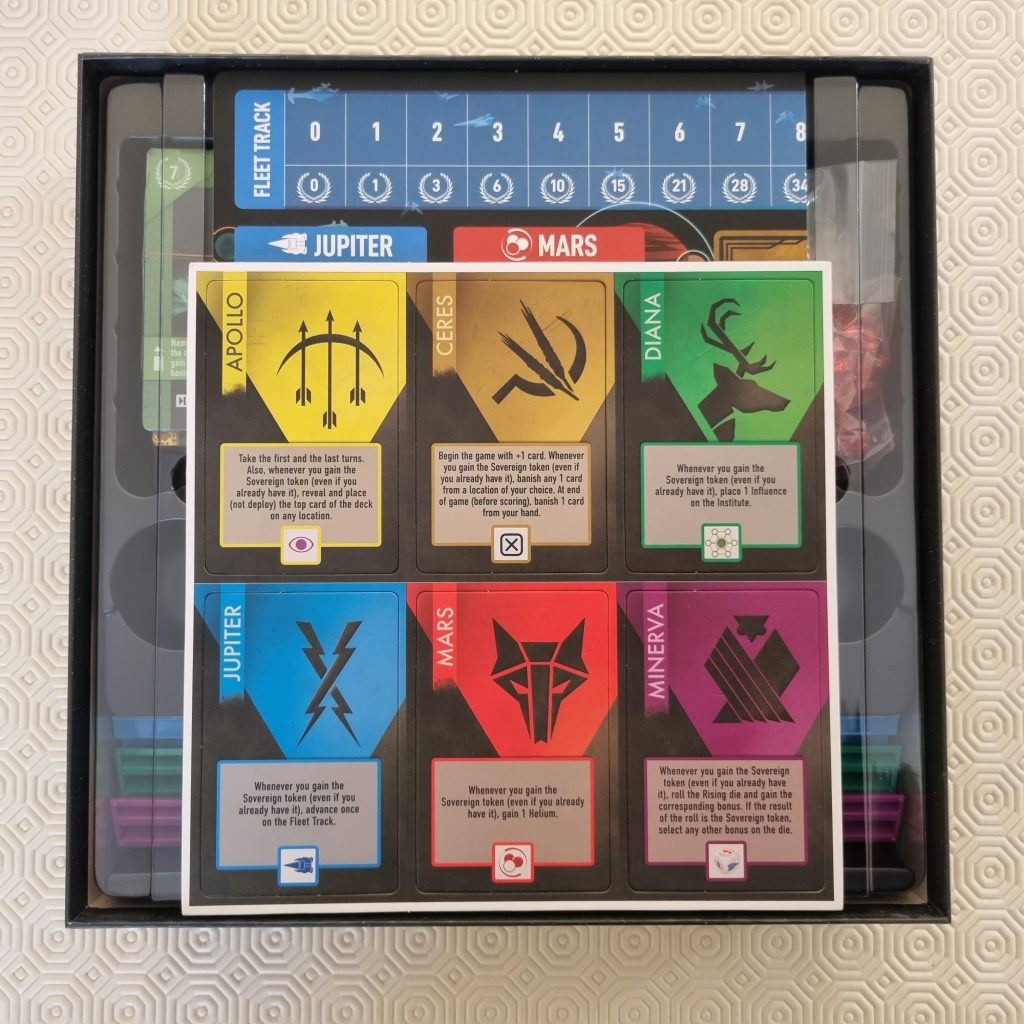
Thematic Investment!
For me, not having to look and check each the abilities and allegiances on each card every turn makes the game play considerably faster, and feel a lot more immersive. I am far more invested in my hand, and interested in who else is coming out to play when I know them by name. It also helps that they all have their own styling (no easy feat with a head count of 112, but Jacqui Davis, Miles Bensky, and Justin Wong have done a superb job).
And, just like real life, I have favourites. There are also those I would actively cross the street (or board) to avoid. For example, I find myself hoping that Aja, Mustang, and the Reporter will show up at various points, whilst my husband has made firm friends with Quicksilver and Darrow. But, even your besties let you down sometimes, or don’t do what you think they will. And when that happens, the disappointment is palpable. No time for tear, though. I have to recover fast, and seek out new characters; ones who will come through for me this time.
And, although some players have questioned the thematic strength of this game (mainly in the shadow of such a strong literary series), I beg to differ. When choosing cards, I feel like I am amassing my allies. Honestly, when my head is in this game, I am leading my House. My hand is holding my followers, and I know each of them. I know their strengths and I know their weaknesses. And ultimately, what this group of individual characters can do during a game during is down to me. If I fail to optimise their abilities, I fail myself and, in a way, I fail them too. I also most likely fail to win. When that happens, I guarantee that I am itching to go again. I will, however, cut characters from my go-to list, trading them out for better options, treating them as commodities. And that perhaps is the most thematic reflection of the entire game.
Colourful Collections!
Now, having raided the rainbow to make such a visually striking game, I must confess that I am a little disappointed that some of the colours are quite difficult to differentiate from others. You see, some of the shades are very similar – copper and brown, orange and red, gold and yellow etc. – which can lead to pick up errors and inaccurate end game point predictions. The black Obsidian characters can also be hard to read from the other end of the table. And whilst each of them has their colour written on them, quick glances often had to be repeated to be sure.
Overall, however, Red Rising and Red Rising Collector’s Edition are a celebration of all shades, and a metaphor for the “takes all sorts” approach to building a strong and successful community.
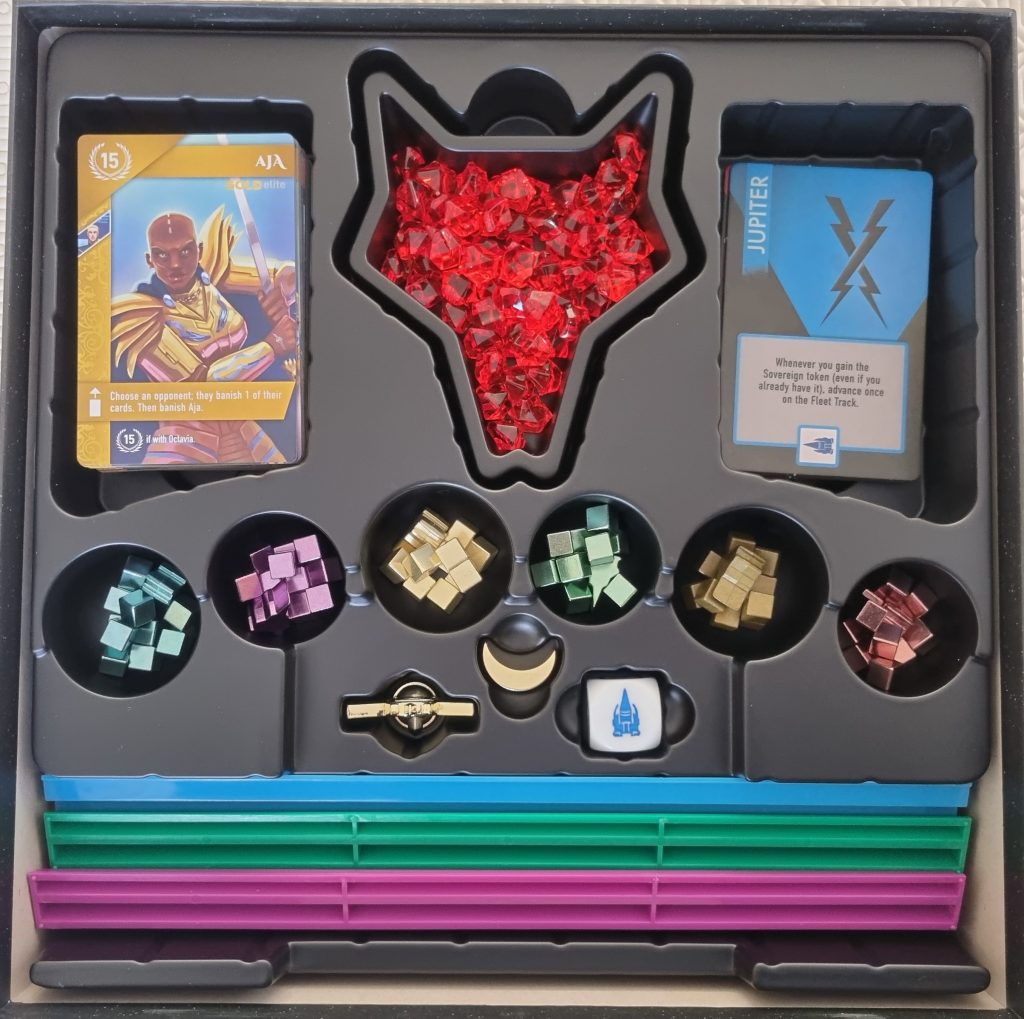
Collectable Components!
Having played our first few games using the standard retail version, I must say the production value is undeniably high. Stonemaier Games are reassuringly consistent in terms of their attention to detail.
I had an inking that Jamey might push the boat out on his passion project, however, and I wasn’t wrong. From the wolf head shaped helium token pot, thick card House Tiles, sturdy (albeit snug) board, and of course those big, glossy characters cards, the game is undeniable quality.
Having said that, Red Rising Collector’s Edition takes the components to another level, and not just in the way I was expecting.
Without doubt, the gold embossed Elite Character cards in Red Rising Collector’s Edition are top level when it comes to eye appeal. So much so that I find myself hunting for golds on the board just to look at the inlaid detailing.
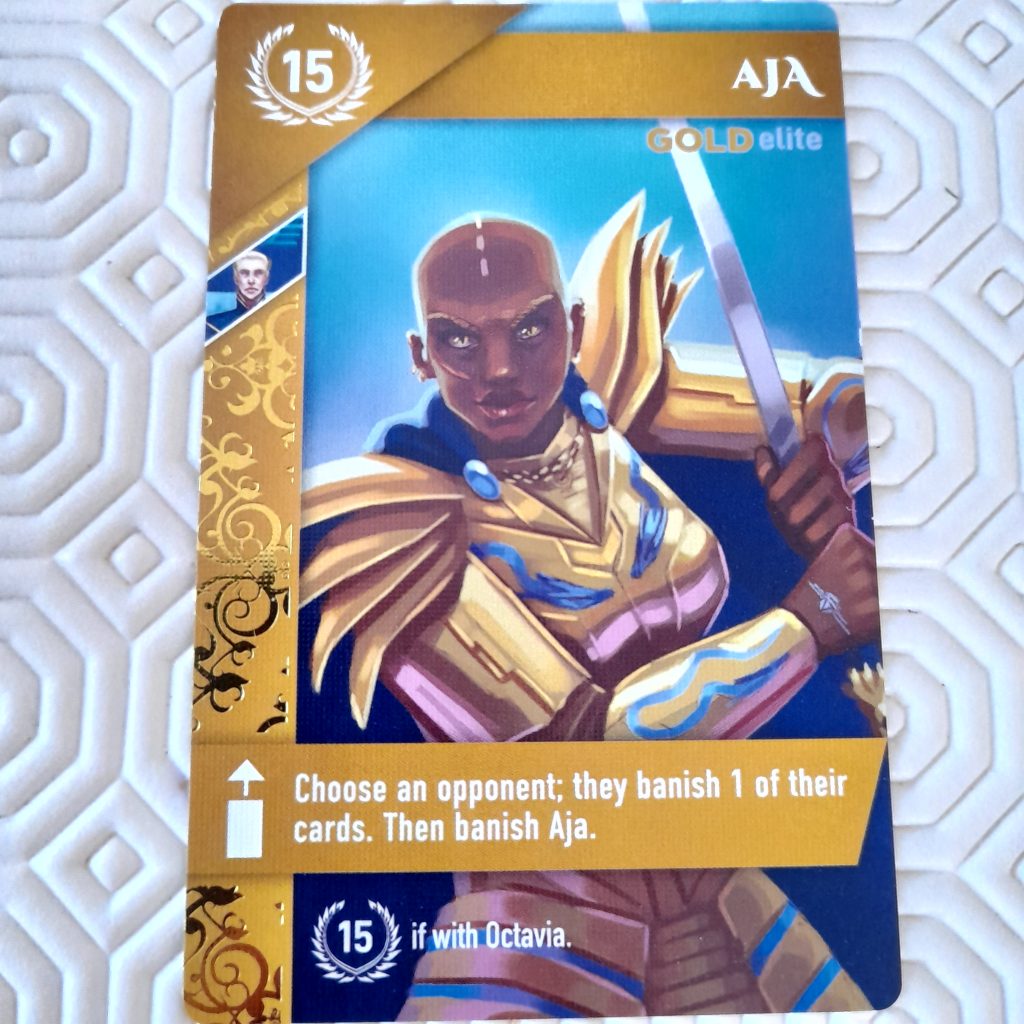
But it’s the feeling of the upgraded metal components in my hand that really make Red Rising Collector’s Edition stand out in my mind. The metal fleet track tokens are absolutely lovely to hold; they feel like the perfect weight and size for the compact board. Having a sculptor on the design team was a solid decision.
Similarly, the first player crescent moon and Sovereign Token are painted metal and feel more substantial than their plastic counterparts. The metal Institute track cubes are also nicer to move around than the plastic ones which are included in the retail version. Although, having said that, the colours are quite muted, which can lead to confusion between the yellow (Luna) and gold (Diana) Houses. A final pleasing touch is the plastic lid to keep the various components in place inside the enhanced tray within the Collector’s box.
In truth, the only duff note in the entire upgraded Red Rising Collector’s Edition is the card holders. These are an exclusive, but sadly, don’t seem to work very well. I don’t know if it is a weight imbalance, or the sheer length of the plastic, but they fall over. A lot.
During our last game, I knocked my hand over so many times that I gave up, and resorted to holding them. As a gamer with a hand disability, I was really looking forward to the card holder. Particularly as cramp and discomfort holding cards inevitably strike me during play. But, compared to inadvertently flipping my cards every few turns, I have decided to lose the holder and suck up the aches and pains.
Price wise, Red Rising Collector’s Edition is around £40 – 45, which is around 1/3 dearer than the retail version. When I first started board gaming, it wouldn’t have occurred to me to pay good money for bits just like the ones in the box. After all, there are so many new games to buy, why would I bother? And to be fair, as stated above, the retail version of Red Rising is top level quality.
But, as I have grown into board gaming, I have realised that a lot of the joy of the experience comes in how a game looks and feels, as well as how it plays. After all, the tactile pleasure is what helps to set it apart from online and digital gaming. On that basis, whilst you definitely don’t need Red Rising Collector’s Edition to enjoy a high quality game, I think the upgrade is worth the extra.
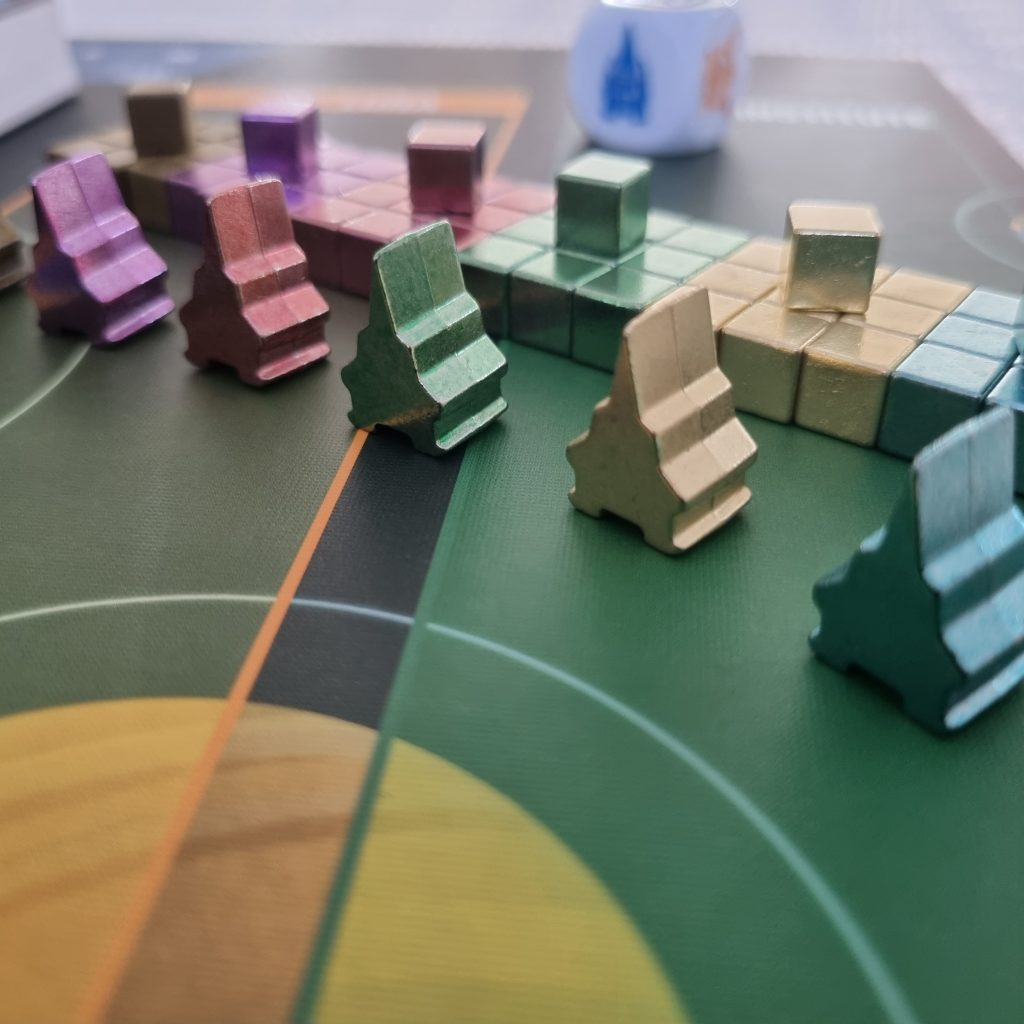
Flying Solo!
As with Wingspan, Stonemaier Games have produced a really smooth solo mode. Designed by Morten Monrad Pedersen, it is quick and easy to operate.
Most enjoyably, it enables me to cycle through more cards in a game than I was initially expecting. It is also surprisingly challenging and a different experience to multiplayer, requiring me to focus on a different style of play.
Even though the actions carried out by Tull Au Toma (the AI) are wholly prescribed by the special AI cards, it still feels fresh. For example, Tull will always deploy and take from locations in priority order. But as the cards on each are different every time, and she is only interested in quantity over quality, I don’t consider it samey.
Plus her turn takes only the time necessary to flip and move two cards, which is super, as I get to AP over my own turns more! Tull’s variation on House powers (in that she doesn’t lead one but rather gives her a location bonus), also helps to mix things up a bit when paying against her. In truth, operating an AI which doesn’t demand that I make decisions or strategise their own gameplay is always a hit in my book, and Tull definitely falls into this category – the Automa Factory hasn’t let me down. Overall, I really enjoy the challenge to make better choices and smarter combinations each time I play.
Decisions Decisions!
Ultimately, Red Rising is a game of choice. Deciding which character to keep. Which character to activate. Which character to take. Which bonus to reap. Which combination works best. And this thought pattern happens every single turn.
It is a thoughtful game where you are continuously considering your options, and adapting to changes caused by both yourself and your opponents. It is also a game where, even though I am directly impacting my opponents’ choices, and being affected by theirs, most of what happens takes place inside my own head rather than moving things around the board.
Red Rising can also be played as deeply or as lightly as you like (or are feeling that day), and for that, I think its versatility and design are brilliant. I’ll never be the fastest player in a game that demands continuous trade offs – my analysis paralysis prevents gut instinct picks. But, for me, that’s ok, and it is a brain pain I welcome any day of the week.
If this sounds like it could be a game for you, you can pop it in your shopping basket at Out of Town Games here
[please note that a copy of this game was kindly provided by the publisher for the purposes of this review but any opinions expressed are my own]

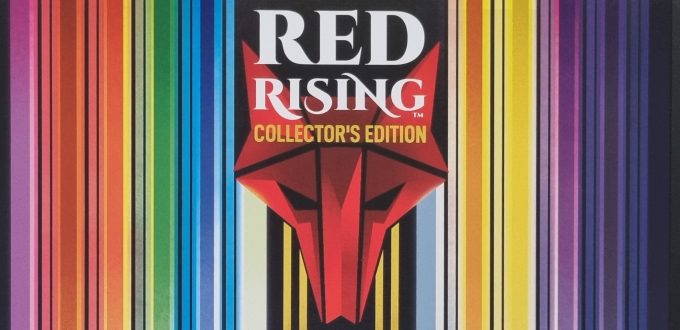



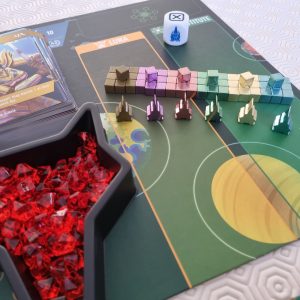


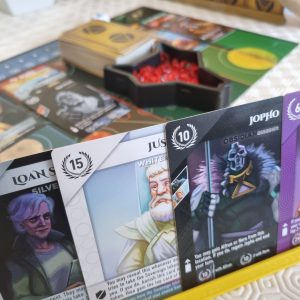

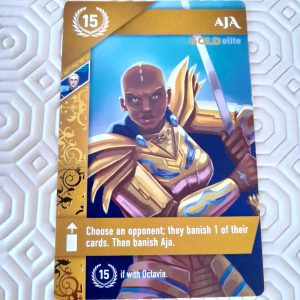

[…] out of the box, and the cards are also stored ready in their day decks. Having been spoilt with Stonemaier’s dedication to excellence when it comes to components, many games fall short in comparison. But not […]